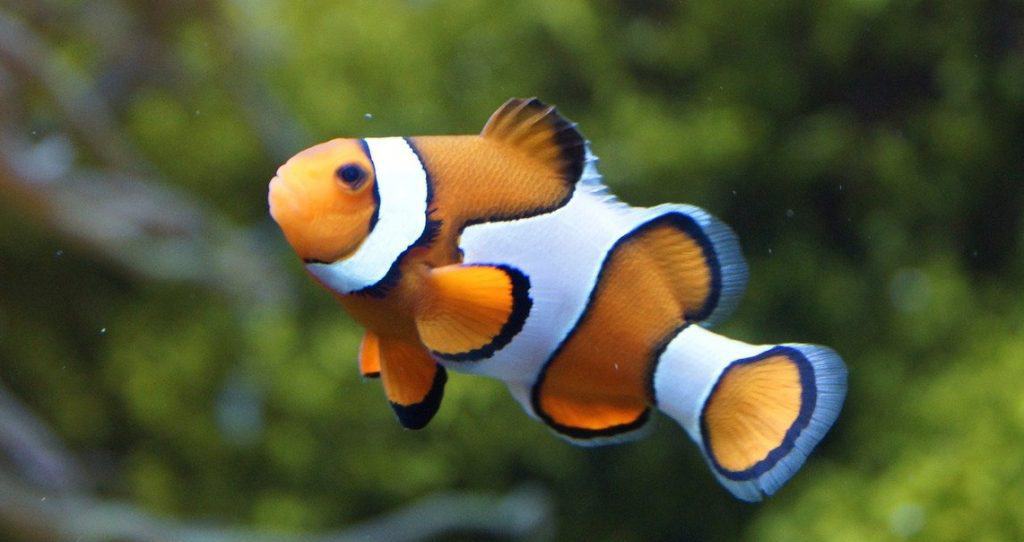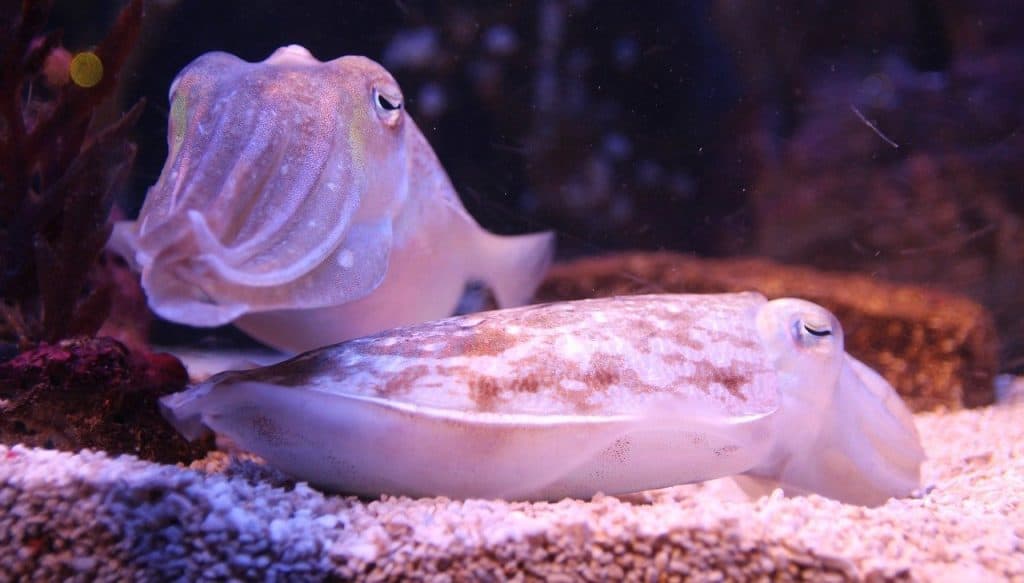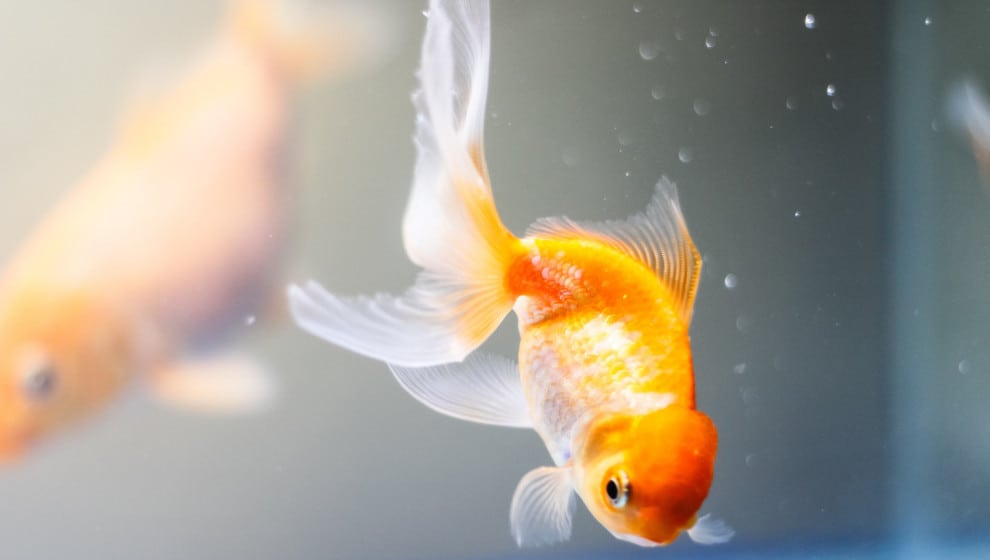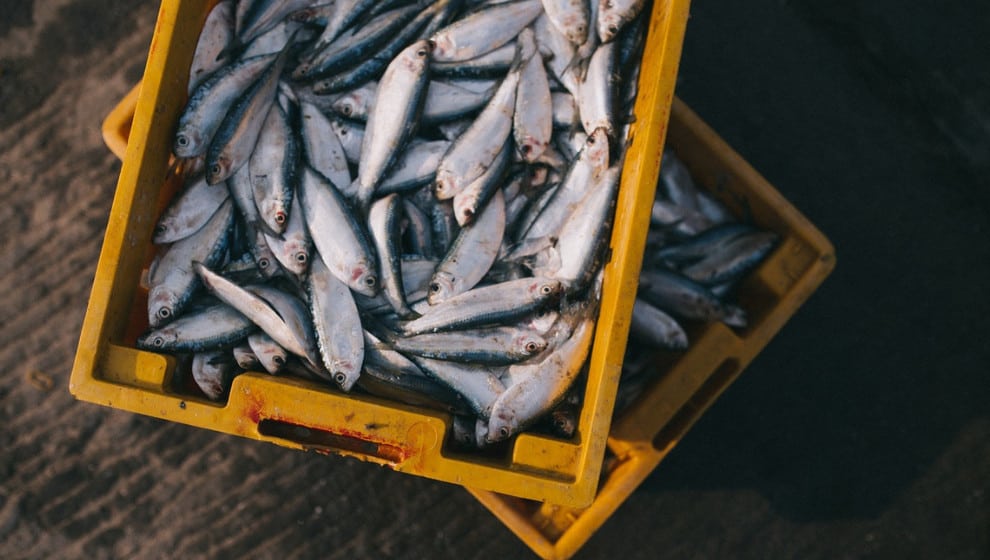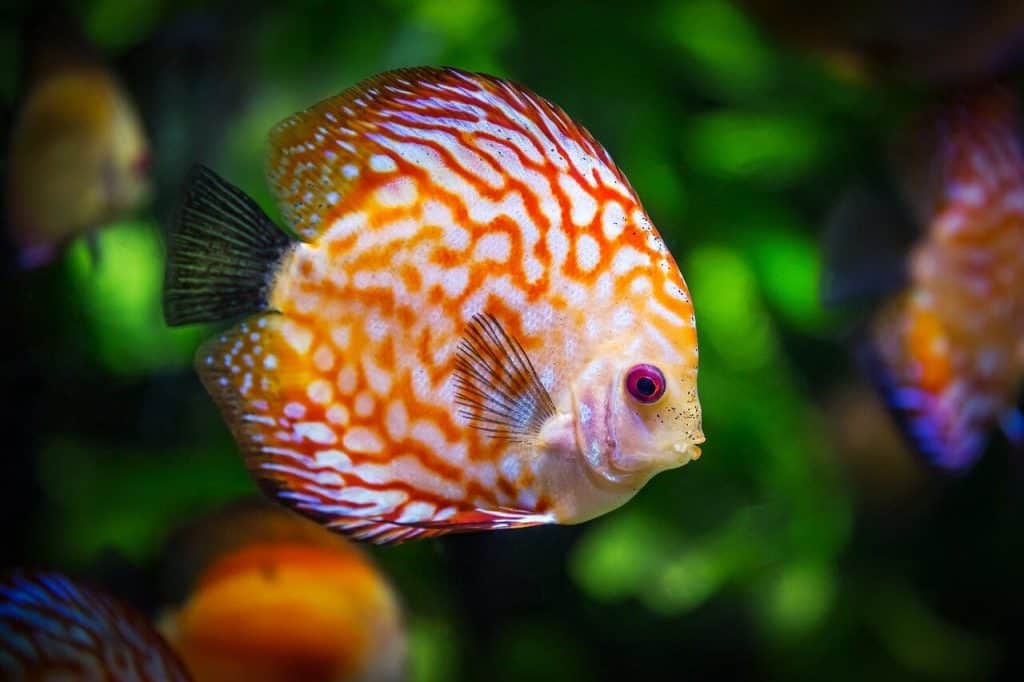Clownfish belongs to the subfamily of Amphiprioninae, which is from the family of Pomacentridae. As a whole, 28 species from the family acknowledged. One is from the genus Premnas, while the rest are from Amphiprion. These fishes naturally form a symbiotic relationship with other sea anemones to live a better life.
Clownfish are inhabited by the Pacific oceans, the Red Sea, and the Australian Great Barrier Reef. These fishes live in the warm water. However, Clownfish are not on the list of endangered species yet due to their better living lifestyle.
If you still didn’t recognize what kind of fish we are talking about? Do you all remember one of the greatest Disney movies? Finding Nemo which was one of the successful animated films, turned out to be a massive hit in 2003b as soon as it was released.
Clownfish are the most demanded fishes for people who wants saltwater aquariums. Clownfish are very hyperactive and full of colorful fishes and have gained a lot of popularity from a movie made in 2003.
It is approximated that after the Nemo series, clownfish sales and purchase gave a massive business turnover to the world. This is because the features of the lead character were so much cherished by the masses that they wished to see the live configured in their aquariums. Even, the public aquarium setups also started showcasing this fish for the purpose of crowd’s interest.
Even, after giving a massive hit to the world, story didn’t pause here. The clownfish today are mostly named after Nemo in the crowd. That’s cool for sure. Further, apart from this movie portrayal, there are a lot of amazing fun facts about these fishes.
Here, are going to highlight some of the interesting and classical facts about clownfish. We are very sure that you would love the idea and enjoy the characteristic features like never before. So, what are you waiting for? Have a look to some of the most enticing facts about your favorite fish.
Table of Contents
Clownfish And Their Color
When we talk about clownfish, what comes to your mind is almost orange color fish with white stripes and black outlines. This color is similar to somewhat a lot of clownfish. However, these fishes have different varieties and colors.
Let’s talk about the white stripes which differ in size and color. The white lines present on the body can variate. They even have dots on the body of different sizes and are mostly of white color. Furthermore, there are also those Maroon color clownfish which have yellow stripes, all fancy.
You can see numerous transitions within the clownfish class due to the selective captivity breeding.
1. Breed Of Clownfish
Clownfish have 28 different species. The majority number of clownfish are Nemo look alike. Still, there is also another entirely different type. This class of fish has a brown and black color on its body which is surrounded by fins in yellow color on top and bottom, equally.
Clownfish also called anemonefish due to the symbiont association they form with anemones. Usually, clownfish can grow few of inches. However, these Maroon clownfish can grow tall up to 6 inches, which is quite impressive!
2. Clownfish Are Hermaphrodite
Are you all familiar with the word hermaphrodite? This indicates that the clownfish are born as a male. Yes, quite shocking, isn’t it. As these male fishes grow up, they have tendency to change into females.
Amusingly, female fish always turn out as the most dominant group leader. The largest fish is the usual male dominant. Due to some reason if female fish dies, then the male will change sex. Surprisingly, this sex change will be permanent. After the male dominant fish changes his sex, the rest of fishes in the hierarchy move upwards.
3. They Are Omnivores
In the natural habitat, clownfish use algae, plankton, mollusk, and shrimps as their dietary source. Generally, the clownfish diet is half vegetable and is partially meat-based. They also depend on their symbiont partners anemone for their diet by eating leftovers or devouring small invertebrate stuck in their anemone habitat.
On the other hand, if we talk about the captative clownfish, they like to consume flakes, pellets, tablets, and alive food, such as worms, shrimps, and fishes. These need to be fed twice a day. However, if we talk about cook or young clownfish, they eat four times a day.
4. Clownfish & Werewolves
The clownfish usually place down eggs on full moon nights. Despite, they live near the ocean, they can always sense ‘love in air.’ As female fish lay off approximately hundred eggs, but they tend to produce as much as thousand.
The role of male fish after the process of fertilization and protect the eggs until they are hatched is really important. They also protect eggs whereas in case any egg develops fungus or wasn’t appropriately fertilized, they eat that egg to protect the remaining ones.
In the meantime, female swims far off the place where she disposed of her eggs.
5. Natural Enemies
Some other fishes you’ll end up liking them except for clownfish. Such as grouper, triggers, snapper, and eels being delicious! Even shark species also pursue the clownfish sometimes.
But as we have discussed before, that anemone having a symbiont relationship with clownfish, they also provide them protection with its tentacles. These are poisonous sting to those who break in.
Clownfish doesn’t have any defense mechanism. That is the reason they go far from their habitat, anemone. The genuine threat to these fishes is the ocean’s overall population and the devastation of their habitat. Luckily, they manage to survive all these harsh conditions and are relatively stable and extensive.
6. Captive Bred Clownfish
Clownfish are the most demanded fish in the market. Instead of fishing out them from the wild, there’s another better option. Recently, people have started captive breeding of clownfish for their use. This technique has made plenty of clownfish for everyone’s use.
Another best thing about captive clownfish is that they can survive up to 3 to six years easily. Some owners say about their pets that they have lived for more than 25 years.
7. Clownfish As A Pet Fish
Keeping clownfish as a pet is no joke. There are a lot of things to make sure of before having clownfish. It would be best if you had a proper setup of a saltwater aquarium. As there are many daily tasks to do, make sure to take care of your fish.
Also, you must be sure of doing enough research before buying the fish for its better health and longer life.
8. Clownfish Are Very Protective
Another hidden trait of clownfish is that they keep themselves hidden inside their anemone. But the actual truth is that they can get aggressive quickly and even bite you to defend their habitat.
Intended for, clownfish doesn’t go well with the butterflyfish because they eat their anemones. So, clownfish keep them away to save their anemones.
Even when in a tank, clownfish can reach to bite when cleaning the tank or changing the water. This can happen more often when you keep wild clownfish instead of captivity breed. The fishes which are raised in tanked are calm and happier.
9. Clownfish Can Sing
Amusingly, clownfish can also make noises like tick or grind with their teeth as they sing. Even their jawbones can act as a soundboard such as a piano.
There are different fishes, particularly loud singers, such as Tomato, Pink Clownfish, and Clarkii. The clownfish live serenely in various groups, they also use sound as their attacking or defend mechanism. They use sound for communication among themselves from miles away.
Some Other Interesting Facts
- Clownfish developed their immunity from the venom of anemone with its thick layer of mucus, which is present on the body’s surface.
- Even though anemone gives protection to clownfish against their predators, they are often preyed on by sharks, eels, and large fishes.
- Clownfish spend their lives in small family groups made of mating couples and their offspring’s colony.
- The primary motive of the movie “Finding Nemo” was the message regarding the damage caused while capturing clownfish. However, there still an increase in the number of captive clownfish.
- Clownfish promotes the global marine ornamental trade for up to 40%. Due to this, fish either in captivity or captured from the ocean directly.
- Clownfish are not good swimmers. So most of the time, they hide in their anemones but whenever they wander out, they do it in a very erratic pattern.
- Male clownfish are dedicated fathers as they will prepare the nest for females. They also guard and clean the nest. Even baby fishes are more attached to the male parent.
Final Thoughts
There is always much more when we talk about clownfish, as they are full of amazing facts that we can think of. In case you are thinking of having raised a clownfish or thinking of breeding one of its kind, this can be a better way to have responsible breeding and pet ownership.

